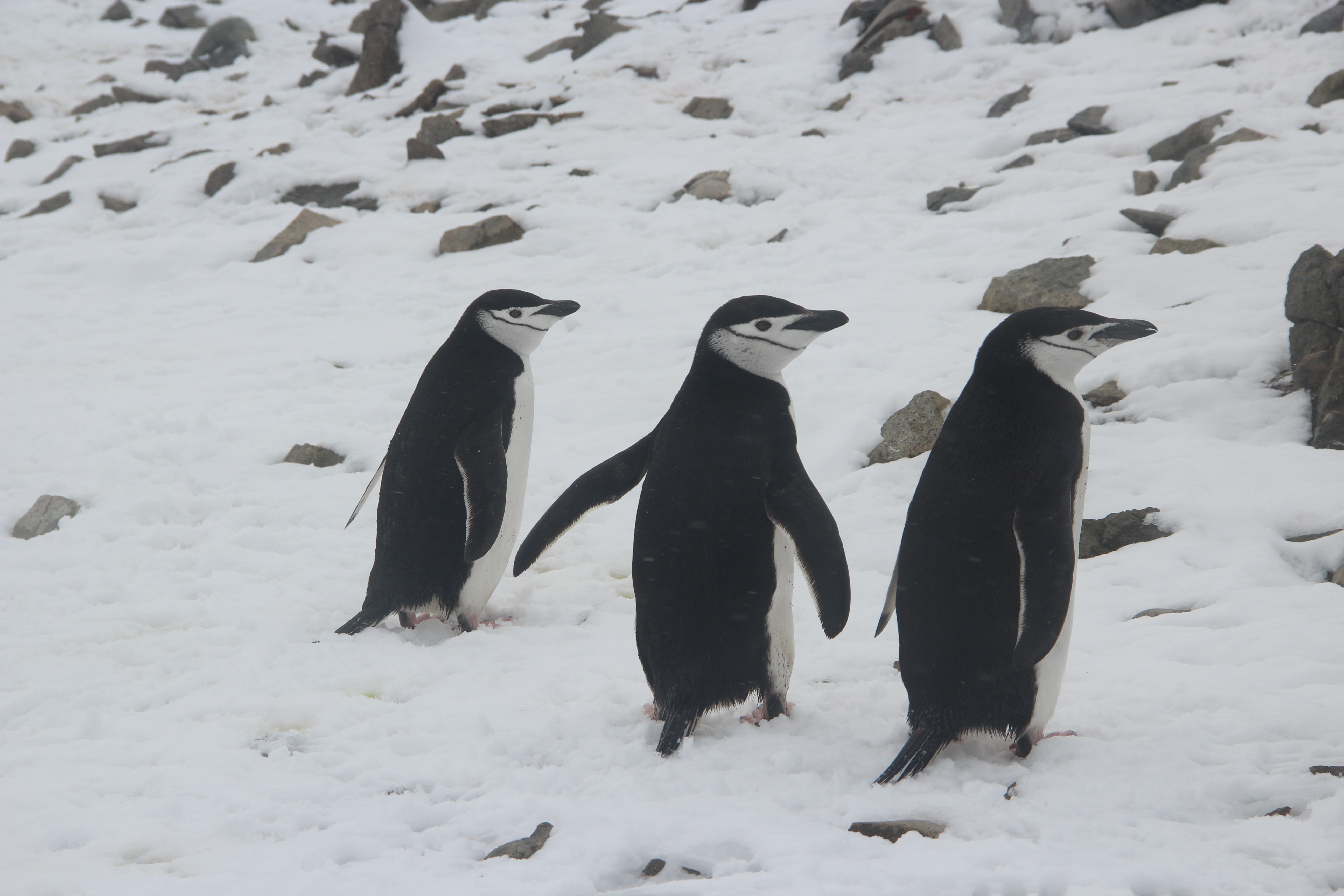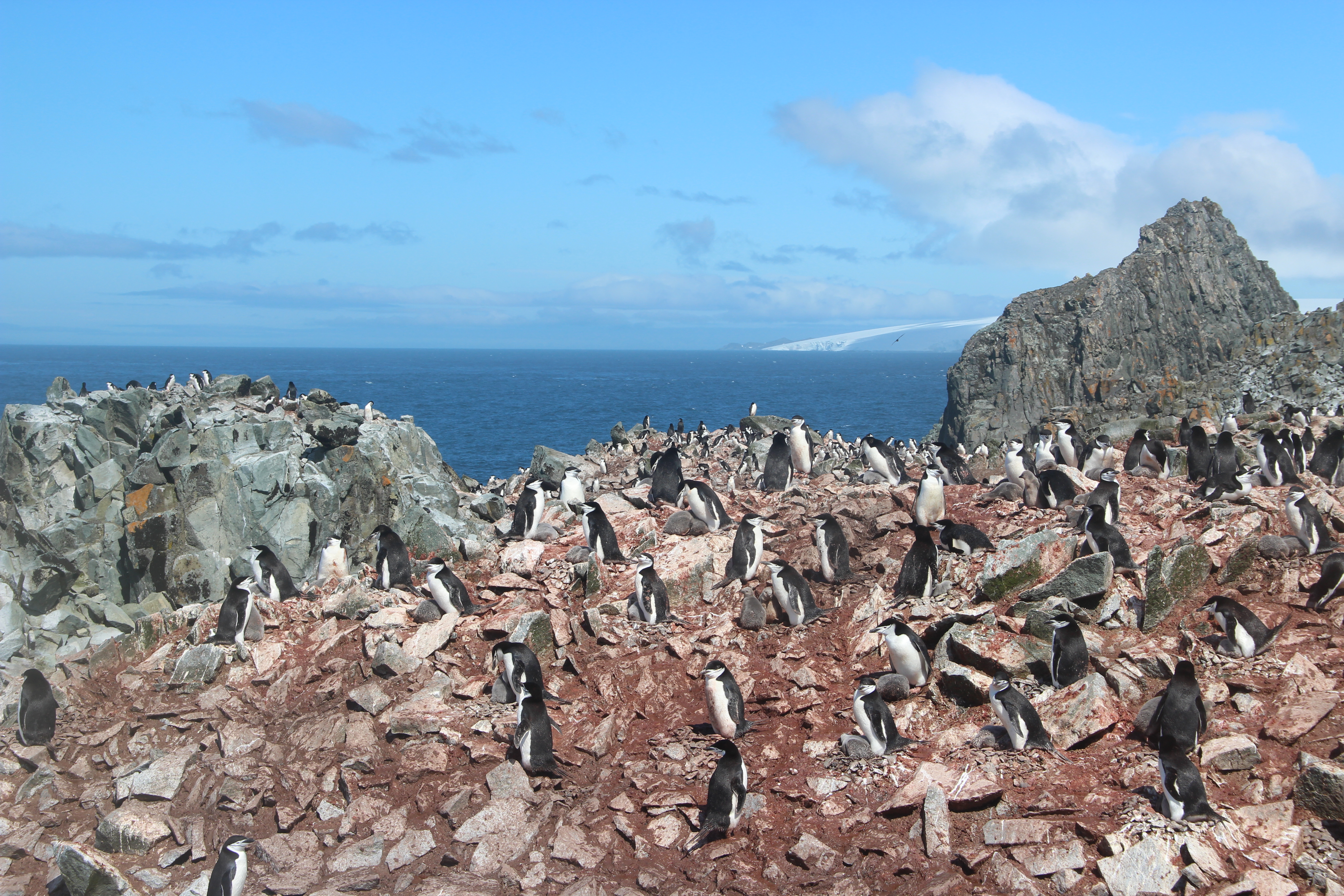ISLAND SCIENCE: Living in Harmony
24 April, 2018
Four people, two tents, a lot of smelly penguins and boil-in-the-bag army rations. That pretty much sums up life at Harmony Point, Nelson Island, South Shetland Islands during January and February 2018. Marine ecologist Vicky Warwick-Evans tells us more about her recent fieldwork studying Chinstrap penguins on the remote Nelson Island.
After crossing the Drake Passage in beautiful sunshine, surrounded by blowing humpback whales and porpoising penguins, we were left on the uninhabited island for our seven week camping adventure. The purpose of the trip was to gain insight into the fine scale foraging behaviour of the thousands of Chinstrap penguins (Pygoscelis antarctica) which breed in numerous sub-colonies around the island each year (Read more about the project here).
Chinstrap penguins are one of the most abundant marine predator in the Antarctic, and like many Antarctic predators they feed on Antarctic krill (Euphausia superba), a small, shrimp-like crustacean, which breeds under the sea-ice and is prey to whales, seals, penguins and other seabirds.

There is now increasing evidence that these Southern Ocean ecosystems are facing a number of globally significant challenges, which may have important impacts on Antarctic predator populations. Some of the fastest rates of ocean warming have been recorded in the waters to the west of the Antarctic Peninsula, which may impact all levels of the marine ecosystem. For example, krill biomass may be reduced as the climate warms, and penguins may be directly impacted as a result of reduced sea ice.
In addition to warming oceans, penguins also face potential competition for krill from commercial fisheries, and from recovering populations of whales. Understanding how ecosystems change is therefore vital if we are to understand how they may behave in the future. One of the fundamental problems is a lack of knowledge about how animals feed and how they find their prey and which habitats penguins prefer.
Our field work involved using GPS tracking devices and Time-Depth Recorders (TDRs) to learn more about where chinstrap penguins from Nelson Island forage when they are constrained to return to land to provision their offspring during the breeding season. We also used video cameras to gain insight into how penguins exploit their prey. We instrumented penguins during chick rearing where both adults were present at the nest. The devices we used were small to ensure there was little effect on the bird. Happily, we recovered all of our cameras though we often ended up covered in guano (penguin poo). This was especially fun as our washing facilities were a glacial meltwater stream, and a packet of wet wipes!

Life on camp was certainly an experience; food was generally boil-in-the-bag, although pizza, Mexican nights and tapas were not unheard of. One day in 10 was glorious, with bright sunshine, flat seas, and even allowed for meals outside in the sunshine. More often than not there was a general damp drizzle in the air, grey clouds overhead, with a rather strong breeze to keep us on our toes (or not). On a few occasions the wind picked up, the blizzards came in and we were tent bound for up to 24 hours. All in all it was a hugely rewarding experience, in terms of both science and adventure.